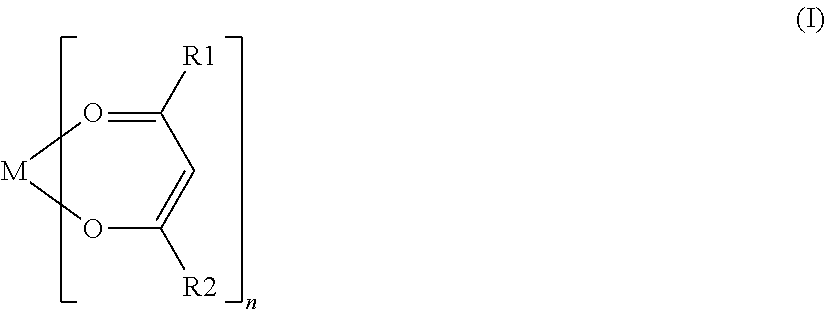Lithium ion polymer battery
a lithium ion polymer battery and polymer battery technology, applied in the field can solve the problems of not describing the improvement of the nail penetration characteristics of lithium ion polymer batteries, excessive short circuit current when a nail is penetrated, abnormal temperature inside the battery, etc., and achieves superior cycle characteristics and improved nail penetration characteristics.
- Summary
- Abstract
- Description
- Claims
- Application Information
AI Technical Summary
Benefits of technology
Problems solved by technology
Method used
Image
Examples
examples 1 to 17
Comparative Examples 1 to 7
[0053]LiCoO2, having an average particle diameter of 13.1 μm and a specific surface area of 0.25 m2 / g, was used as a positive electrode active material in each lithium ion polymer battery of Examples 1 to 17, and Comparative Examples 1 to 7. Hereinafter, the added amount of various coupling agents is shown as the ratio (% by mass) to the mass of a positive electrode active material.
[0054]Table 1 shows the relations between the reference symbols and the specific names of each of the gelling agents used in Examples and Comparative Examples.
TABLE lGelling agentRe-SymbolNameChemical structure formulamarksGEL 1Polyethylene glycolCH2═CHCOO(CH2CH2O)4OCCH═CH2(#200) diacrylateGEL 2Polyethylene glycolCH2═CHCOO(CH2CH2O)9OCCH═CH2(#400) diacrylateGEL 3Tripropylene glycolCH2═CHCOO(CH(CH3)CH2O)m—(CH2CH(CH3)O)nOCCH═CH2m + n = diacrylateGEL 4Polypropylene glycolCH2═CHCOO(CH(CH3)CH2O)m—(CH2CH(CH3)O)nOCCH═CH2m + n =(#700) diacrylate12GEL 51,6-Hexanediol acrylateCH2═CHCOO(CH2...
examples 18 to 30
Comparative Examples 8 to 14
[0067]In the batteries of Examples 18 to 23 and Comparative Examples 8 to 12, the coupling agents in the batteries of Example 1 were replaced with other coupling agents in order to examine whether these coupling agents could provide improved effects on the cycle characteristics and nail penetration characteristics.
[0068]For the batteries of Comparative Examples 8 to 12, ferric trisacetylacetonate (Comparative Example 8), aluminum isopropylate (Comparative Example 9), aluminum sec-butyrate (Comparative Example 10), 3-methacryloxypropyltrimethoxysilane (Comparative Example 11), or 3-glycidoxypropyltrimethoxysilane (Comparative Example 12) was used as a coupling agent.
[0069]For each battery of Examples 18 to 23, various compounds represented by General Formula (I) were used as a coupling agent. The coupling agent used in each battery of Examples 18 to 23 contained an alkoxy group, except for aluminum trisacetylacetonate used in the battery of Example 19 and ...
examples 31 to 44
And Comparative Examples 15 to 33
[0076]In the batteries of Examples 31 to 44, and Comparative Examples 15 to 33, the positive electrode active materials in Example 1, or Comparative Example 1, or 2 were changed variously in order to examine whether these positive electrode active materials could provide improved effects on the cycle characteristics and nail penetration characteristics.
[0077]In the batteries of Examples 31 to 39, and Comparative Examples 15 to 28, LiCoO2, having a varied average particle diameter of 3.3 to 16.6 μm and a varied specific surface area of 0.11 to 0.90 m2 / g, was used as the positive electrode active material, GEL 1 was or was not added, and aluminum bisethylacetoacetate monoacetylacetonate as a coupling agent was or was not added. Furthermore, in Examples 40 to 44, and Comparative Examples 29 to 33, each of GEL 1 and aluminum bisethylacetoacetate monoacetylacetonate as a coupling agent was or was not added to the various types of the positive electrode ac...
PUM
| Property | Measurement | Unit |
|---|---|---|
| specific surface area | aaaaa | aaaaa |
| particle diameter | aaaaa | aaaaa |
| particle diameter | aaaaa | aaaaa |
Abstract
Description
Claims
Application Information
 Login to View More
Login to View More - R&D
- Intellectual Property
- Life Sciences
- Materials
- Tech Scout
- Unparalleled Data Quality
- Higher Quality Content
- 60% Fewer Hallucinations
Browse by: Latest US Patents, China's latest patents, Technical Efficacy Thesaurus, Application Domain, Technology Topic, Popular Technical Reports.
© 2025 PatSnap. All rights reserved.Legal|Privacy policy|Modern Slavery Act Transparency Statement|Sitemap|About US| Contact US: help@patsnap.com



